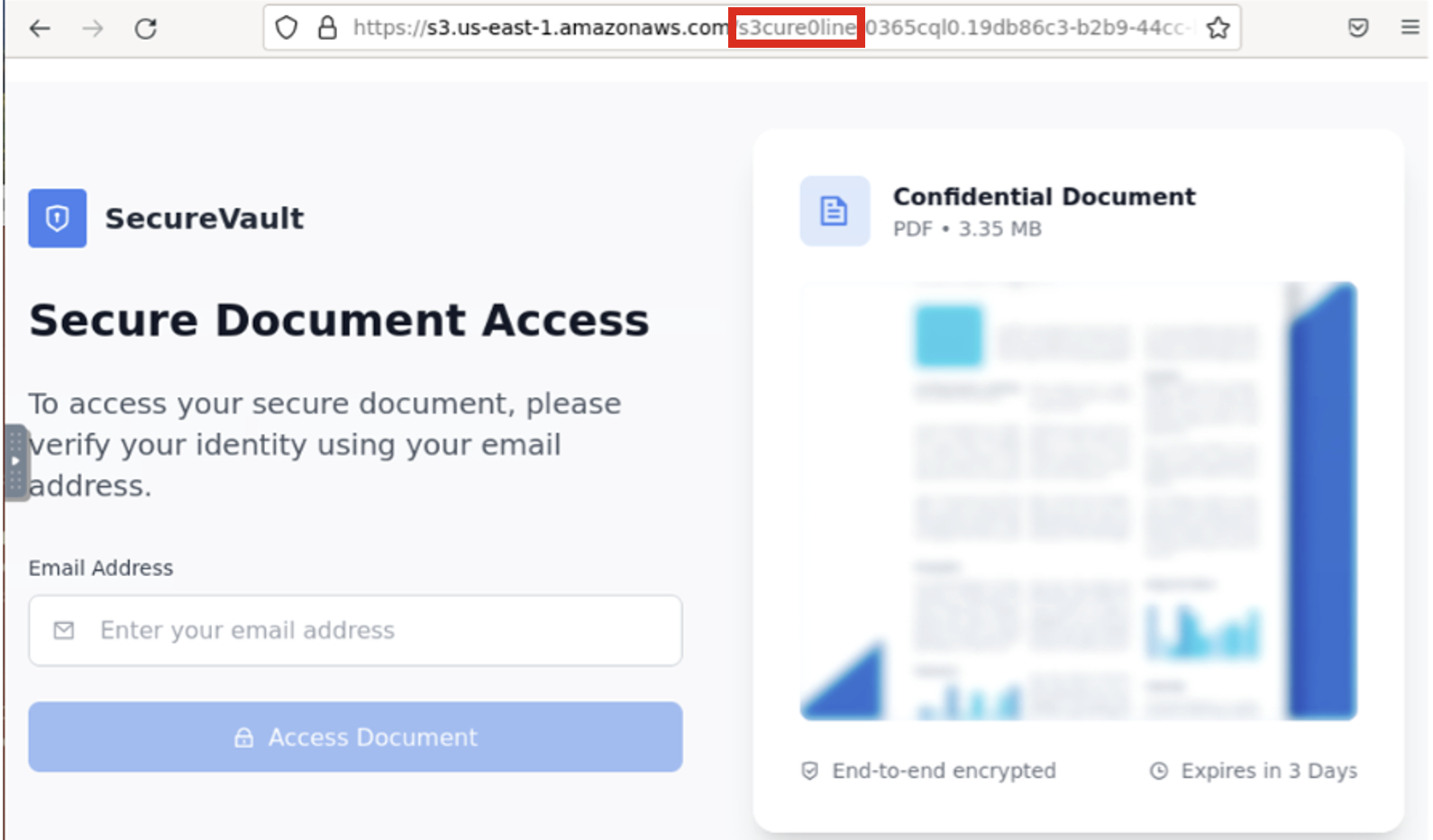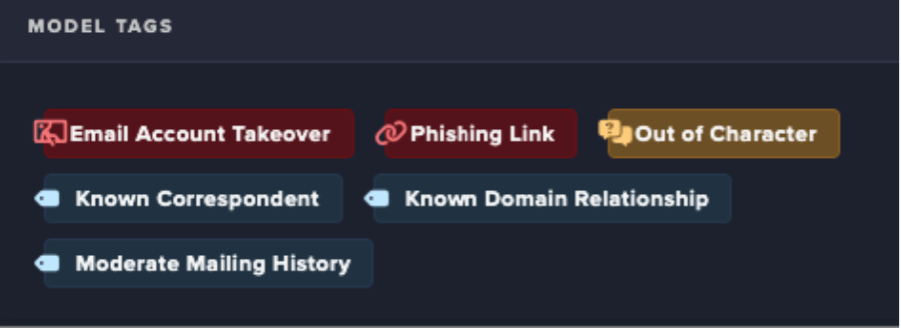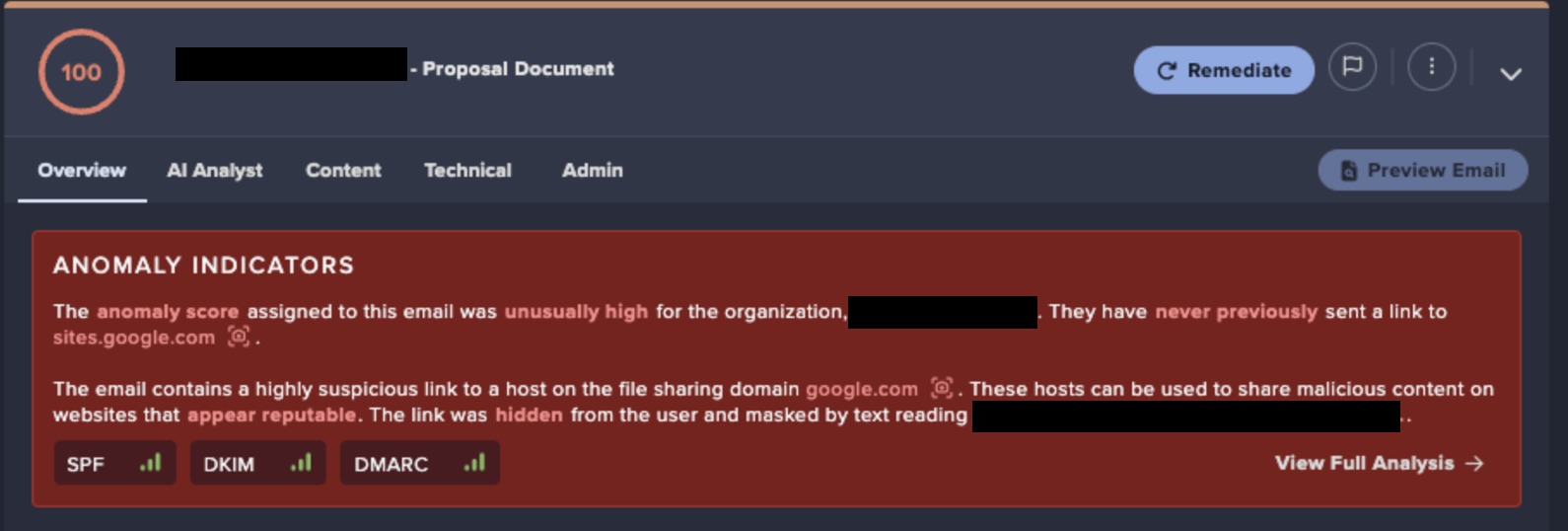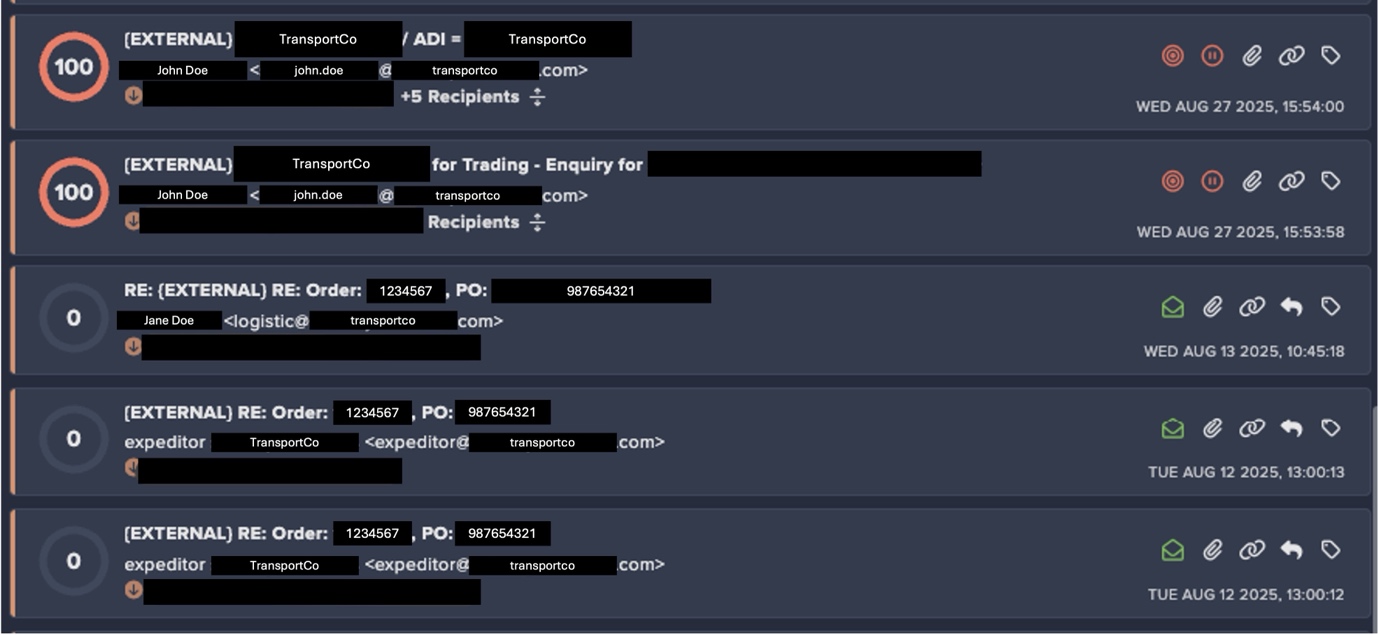Growing pains: Balancing efficiency with risk
This organization has recently scaled its operations, and numerous acquisitions have significantly boosted the organization’s capabilities and growth. However, this also creates work and high expectations for the organization’s IT and security teams. Within 12 months of an acquisition, the teams must fully integrate each new business onto the company’s platform. “A huge piece of that integration plan is rolling out our security controls,” said the CISO. “While our goal is to connect those facilities up as quickly as possible to drive efficiency, we also need to implement the proper security controls to protect the enterprise.”
Gap beyond the perimeter
The organization had established strong security measures to safeguard its perimeter; however, the CISO identified a critical gap in real-time network monitoring. If the perimeter were breached, threats were only discovered after an endpoint was compromised and the issue was manually reported.
As digital transformation progresses, the need to adopt advanced technologies is becoming essential, particularly as organizations begin to open up operational environments to greater connectivity. Many processes still rely on traditional methods, and integrating innovative solutions could drive significant improvements in efficiency and productivity. “We’re committed to adopting cutting-edge technologies,” the CISO explained. “But we understood that without more robust network security controls, opening up our operational environments would expose us to heightened risks, including advanced threats like ransomware.”
Building a layered, proactive security strategy with Darktrace
To close the gap beyond the perimeter, the company embarked on a free trial with Darktrace. The CISO recalls: “The trials were fantastic. It was obvious that Darktrace was exactly what we needed. The Darktrace team was also very knowledgeable and helpful throughout the process, which was impressive.”
Today, the organization is using a combination of Darktrace solutions for its layered security approach, including:
- Darktrace / NETWORK for network detection and response
- Darktrace / IDENTITY for identity management
- Darktrace / EMAIL for email security
- Darktrace / ENDPOINT for endpoint security
- Darktrace / Proactive Exposure Management for assessing vulnerabilities
- Darktrace / Attack Surface Management for asset management security
Detecting unusual behavior with AI
Darktrace’s use of machine learning and Self-Learning AI is one of the reasons the company chose Darktrace. Instead of teaching an AI system what an ‘attack’ looks like, training it on large data lakes of thousands of organizations’ data, Darktrace AI learns from the company’s own unique data and user activity to learn and create baseline models of what ‘normal’ looks like for their business.
Darktrace can then detect subtle deviations and unusual activity that signals a possible threat. “That fascinated us because what it really means is this technology doesn’t need to know about every single threat because the threat itself isn’t important, it’s the behavior of the activity that’s important. That capability is unique when it when it comes to threat detection,” said the CISO.
Identifying and mitigating high-impact attack paths
The security team appreciated that with Darktrace they could take a more proactive approach to security by exposing high-risk attack paths through modeling and AI risk assessments. Darktrace / Proactive Exposure Management gives them visibility into vulnerable entry points and assets, identifies active risks, and prioritizes the most important security issues to be addressed.
“Specific users and assets within our business have a higher risk of being targeted by a cyber-attack, for example our executives,” said the CISO. “With Darktrace, we get an adversarial view of our risk. We can see the attack path around those potential targets and proactively take measures to mitigate that vulnerability and prevent an attack.”
Driving up productivity while putting the brakes on cyber-attacks
The security team collaborated with Darktrace to fine tune the models that really fit their business. With Darktrace now automating most of their threat detection and response efforts, productivity has soared, the security team is now focused on delivering greater value to the business and, most importantly, Darktrace proved it could quickly detect and shut down a major cyber-attack–and do so without impacting business operations.
Fueling team productivity with automation and AI
Prior to using Darktrace, the security team had little visibility into potential risks beyond the perimeter. Today, the team has full control and visibility over the network. “My team is now spending 80-90% of their time doing proactive work because Darktrace is managing the vast majority of our detect and response needs. The team really has faith in the Darktrace system,” said the CISO.
With less time spent on low-level manual tasks, the security team can now focus on higher priority initiatives. For example, they have expanded their internal vulnerability assessments across the entire group. The team couldn’t focus on this additional audit and vulnerability management work if Darktrace wasn’t taking care of most of their security monitoring. “Darktrace has allowed us to move on to these additional kinds of governance projects that we otherwise would have to hire an army of staff to get through”.
Stopping email threats in their tracks
Using Darktrace / EMAIL, the company has identified and blocked a significant percentage of emails that were making it past their native email filters. “Darktrace is especially good at detecting impersonation emails, and we really appreciate its ability to automatically remove suspicious emails directly from a user’s inbox. It adds an extra level of confidence,” said the CISO.
Self-Learning AI understands anomalies within unique communication patterns to stop known and unknown threats. For example, when an employee sent an email to a brand new domain, Darktrace identified the behavior as unusual and inconsistent with baseline models and blocked the email.
Darktrace passes the biggest test of all
In 2024, the company experienced the value of the security system firsthand when attackers exploited a vulnerability in a third-party remote support solution that they was using. This solution provided remote access and tech support capabilities. If successful, the attackers could have infiltrated high-value end points and created their own administrative user, giving them full control over the server.
“We first became aware of the attack when Darktrace notified us of unusual behavior coming from the remote support server,” said the CISO. The attackers were attempting to put backdoors onto the service with the intent of selling access to the highest bidder who would then install ransomware on their servers. It all happened very quickly, as the attackers tried to connect to the internal network and other servers, while also firing off a host of other actions, like PowerShell commands, to escalate their privileges.
“Darktrace worked flawlessly. There was no chance that ransomware was ever going to come in,” the CISO said. “Even though there was no signature to really look at, Darktrace realized this was not normal behavior for this server, shutting down connections and doing everything it could do to stop the attack.” Within eight hours, the security team identified and stopped the attack, severed its connection to the third-party solution, and completed additional analysis and clean-up. “In addition to our own investigation, third parties like our external SOC and legal department also confirmed that Darktrace performed as expected. We were able to report back to the executive team that there was zero risk that any data or systems were compromised.”
Post-attack, there was no need to make any changes to Darktrace. The team consistently reviews its models and baselines, often collaborating with Darktrace to make adjustments when needed to continuously improve performance. “Because of this relationship and constant engagement with Darktrace’s technical teams, we didn't have to go back and ask: ‘why wasn’t this updated’ or ‘why didn’t this model work.’ The models worked.”
His advice to other organizations facing similar challenges? First, focus on updating, patching, and vulnerability management, and act quickly when vulnerabilities are identified. His second piece of advice: “have an automated detection system like Darktrace in place so you can respond at the speed that these attacks evolve. Humans can no longer keep up with a scripted attack as it moves around and tries to compromise items on your network. You need the right technology to fight these types of attacks.”
Dynamic capabilities for a dynamic future
Real-time playbooks
With a proactive, enterprise-wide security strategy in place, the CISO now has the time to think about future projects and innovations. He’s particularly interested in the idea of generating playbooks on the fly in response to real-time events. He believes cyber-attacks are far too varied for a static playbook to be useful; when an attack strikes, teams need to quickly understand exactly what’s in front of them and how to shut it down. “This fits into our future cybersecurity strategy, and Darktrace is the only company I’ve seen talking about building playbooks dynamically. This kind of technology would really help bring our cybersecurity strategy full circle.”
“Darktrace ’s technology, experience and expertise is helping us staying ahead of cyber-attacks, minimizing our risk and driving greater productivity for our team,” said the CISO. In collaboration with Darktrace, the team have created a security foundation that is both powerful and agile. “While Darktrace is detecting and responding to attacks targeting our business today, we know that it’s always learning, adapting and scaling to ensure we’re protected tomorrow. That gives me peace of mind and the freedom to focus on our future.”
Download the Darktrace / NETWORK Solution Brief

Protect in real time: Defend against known and emerging threats without relying on historical data or external intelligence.
Full visibility: Gain comprehensive insights across all network environments, including on-premises, cloud, and remote devices.
AI-powered efficiency: Streamline incident response with AI automation, saving time and resources while ensuring minimal disruption to operations.




















![Geographical distribution of organization’s affected by Akira ransomware in 2025 [9].](https://cdn.prod.website-files.com/626ff4d25aca2edf4325ff97/68e684a90c107be86fa5c2e0_Screenshot%202025-10-08%20at%207.53.20%E2%80%AFAM.png)
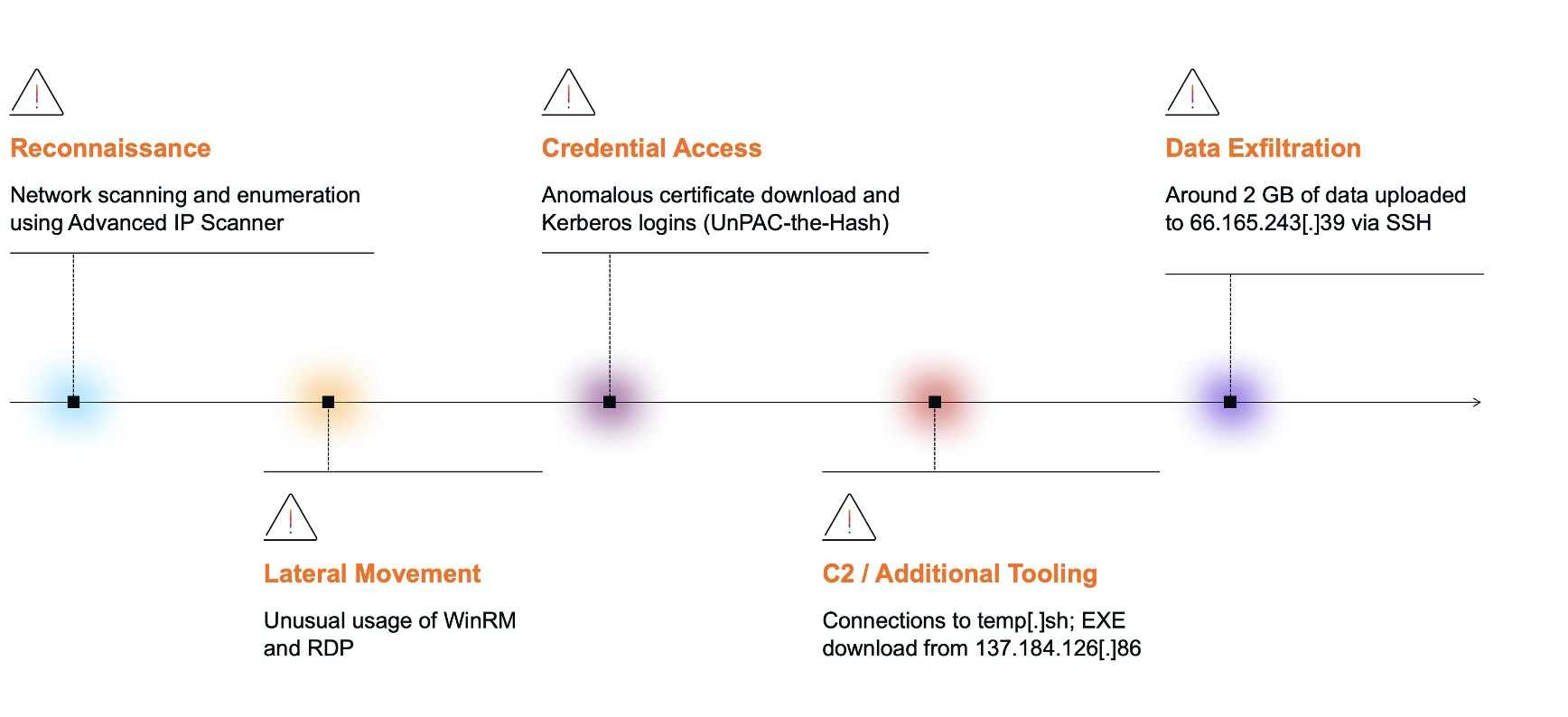
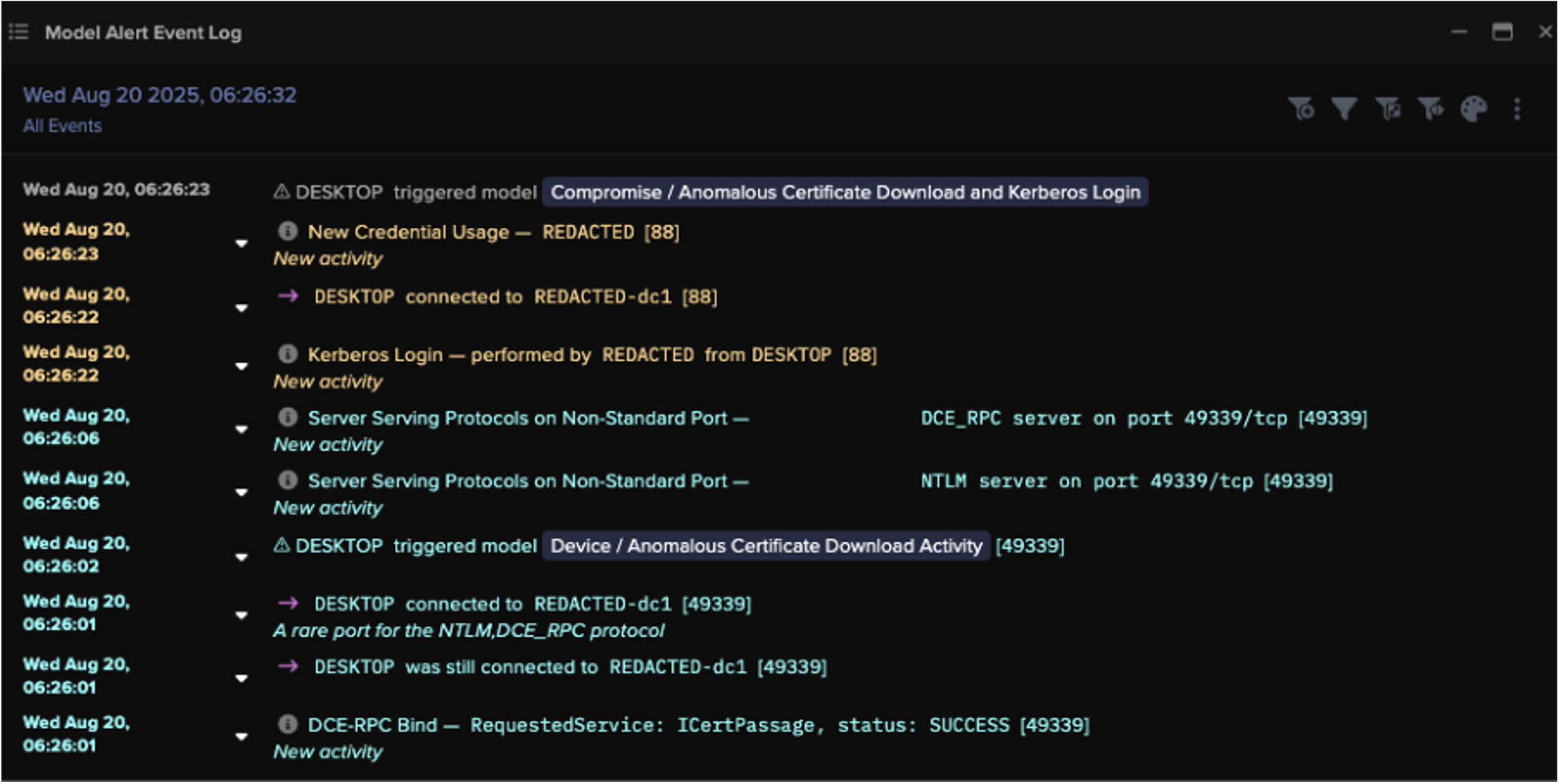
![Flowchart of Kerberos PKINIT pre-authentication and U2U authentication [12].](https://cdn.prod.website-files.com/626ff4d25aca2edf4325ff97/68e53a2b5e9394d5a5cbebb7_Screenshot%202025-10-07%20at%209.04.43%E2%80%AFAM.png)

![Cyber AI Analyst investigation into the suspicious file download and suspected C2 activity between the ESXI device and the external endpoint 137.184.243[.]69.](https://cdn.prod.website-files.com/626ff4d25aca2edf4325ff97/68e53a8ea01e348d5a62a6c3_Screenshot%202025-10-07%20at%209.06.31%E2%80%AFAM.png)
![Packet capture (PCAP) of connections between the ESXi device and 137.184.243[.]69.](https://cdn.prod.website-files.com/626ff4d25aca2edf4325ff97/68e53ae5304f84a4192967db_Screenshot%202025-10-07%20at%209.07.53%E2%80%AFAM.png)
![Cyber AI Analyst incident view highlighting multiple unusual events across several devices on August 20. Notably, it includes the “Unusual External Data Transfer” event, which corresponds to the anomalous 2 GB data upload to the known Akira-associated endpoint 66.165.243[.]39.](https://cdn.prod.website-files.com/626ff4d25aca2edf4325ff97/68e53b26d90343a0a6ab3bb2_Screenshot%202025-10-07%20at%209.09.02%E2%80%AFAM.png)





%20Date08132025%200740%20AM.png)

